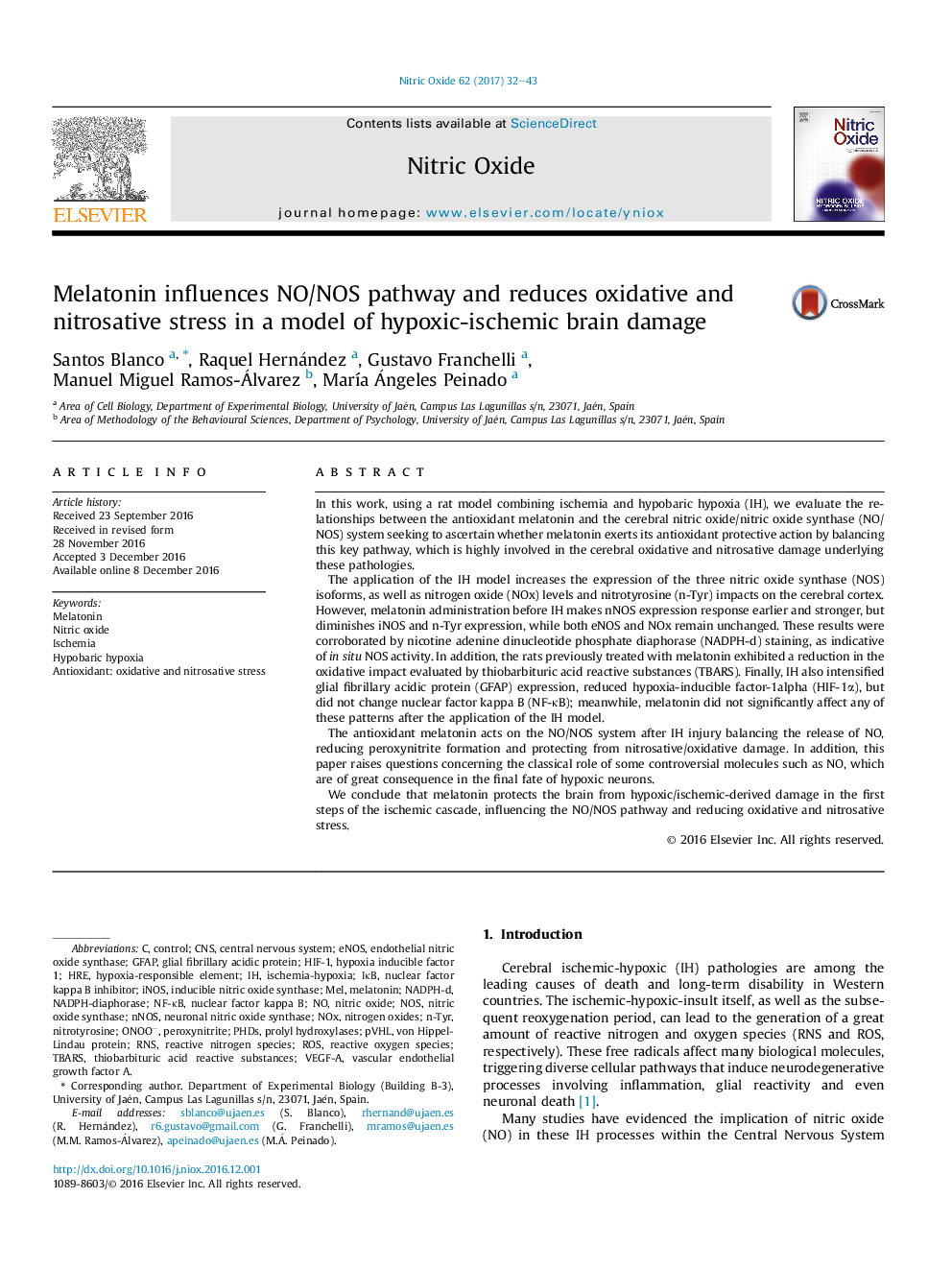| کد مقاله | کد نشریه | سال انتشار | مقاله انگلیسی | نسخه تمام متن |
|---|---|---|---|---|
| 5514284 | 1541598 | 2017 | 12 صفحه PDF | دانلود رایگان |

- The ischemic/hypoxic (IH) model applied in this study deregulates the NO/NOS pathway.
- Melatonin prompts nNOS response after IH.
- Melatonin downregulates iNOS and diminishes nitrosative-oxidative impacts after IH.
- Melatonin may prevent HI neurodegenerative associated damage via NO/NOS balance.
- Melatonin is a suitable standard for studying the molecular mechanisms underlying IH.
In this work, using a rat model combining ischemia and hypobaric hypoxia (IH), we evaluate the relationships between the antioxidant melatonin and the cerebral nitric oxide/nitric oxide synthase (NO/NOS) system seeking to ascertain whether melatonin exerts its antioxidant protective action by balancing this key pathway, which is highly involved in the cerebral oxidative and nitrosative damage underlying these pathologies.The application of the IH model increases the expression of the three nitric oxide synthase (NOS) isoforms, as well as nitrogen oxide (NOx) levels and nitrotyrosine (n-Tyr) impacts on the cerebral cortex. However, melatonin administration before IH makes nNOS expression response earlier and stronger, but diminishes iNOS and n-Tyr expression, while both eNOS and NOx remain unchanged. These results were corroborated by nicotine adenine dinucleotide phosphate diaphorase (NADPH-d) staining, as indicative of in situ NOS activity. In addition, the rats previously treated with melatonin exhibited a reduction in the oxidative impact evaluated by thiobarbituric acid reactive substances (TBARS). Finally, IH also intensified glial fibrillary acidic protein (GFAP) expression, reduced hypoxia-inducible factor-1alpha (HIF-1α), but did not change nuclear factor kappa B (NF-κB); meanwhile, melatonin did not significantly affect any of these patterns after the application of the IH model.The antioxidant melatonin acts on the NO/NOS system after IH injury balancing the release of NO, reducing peroxynitrite formation and protecting from nitrosative/oxidative damage. In addition, this paper raises questions concerning the classical role of some controversial molecules such as NO, which are of great consequence in the final fate of hypoxic neurons.We conclude that melatonin protects the brain from hypoxic/ischemic-derived damage in the first steps of the ischemic cascade, influencing the NO/NOS pathway and reducing oxidative and nitrosative stress.
Journal: Nitric Oxide - Volume 62, 30 January 2017, Pages 32-43